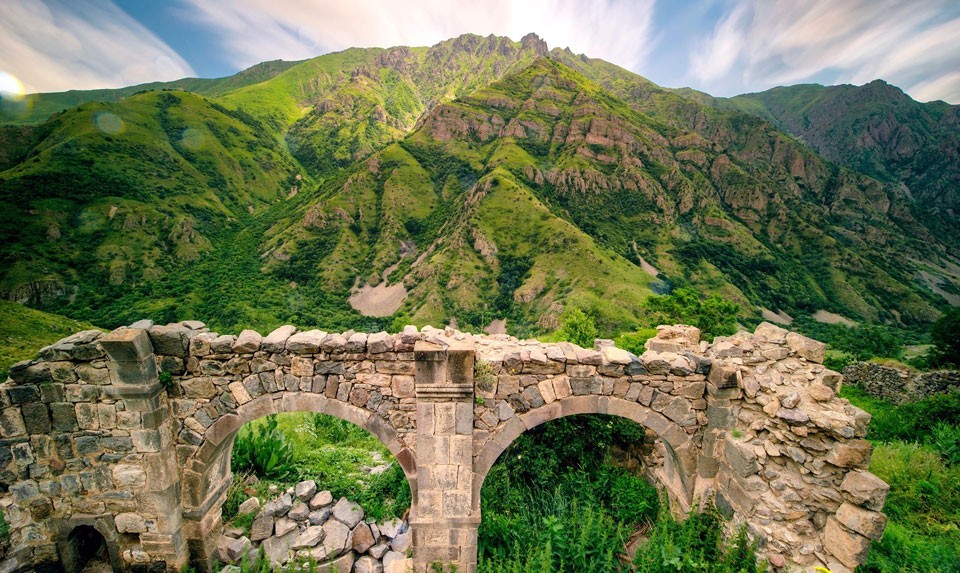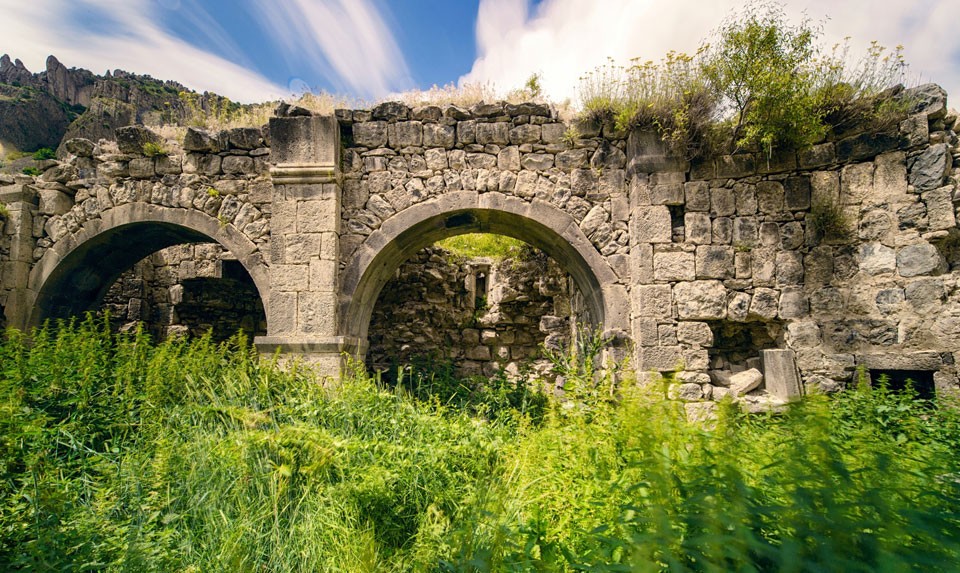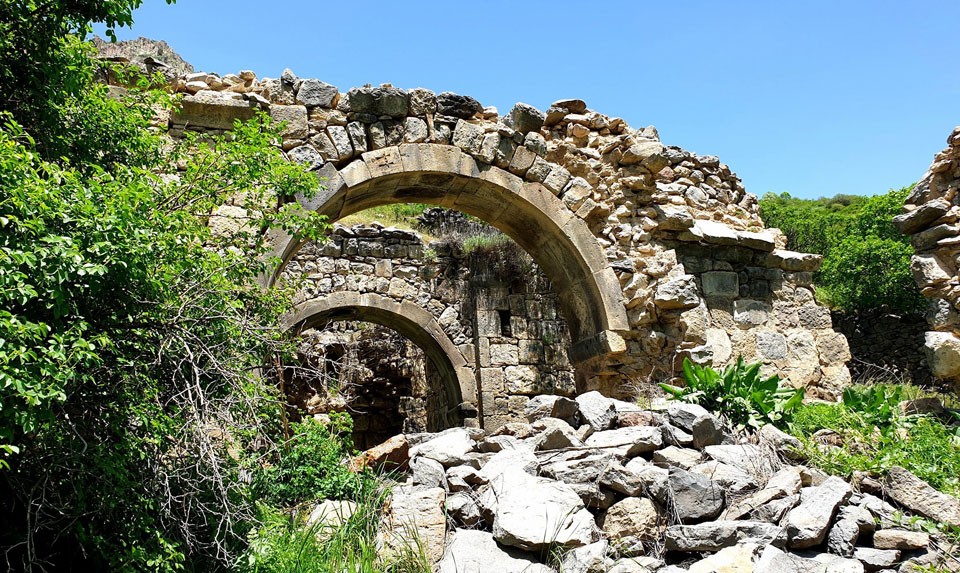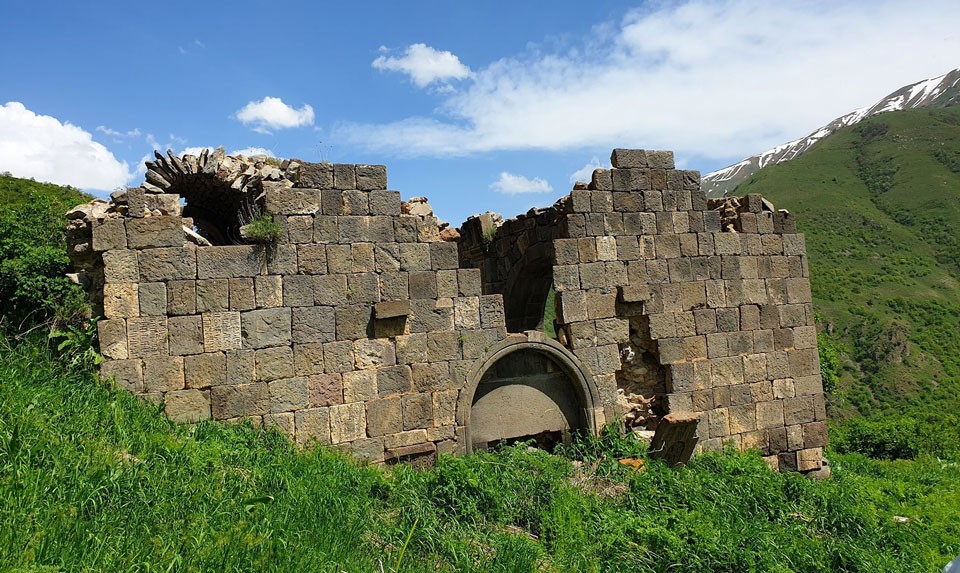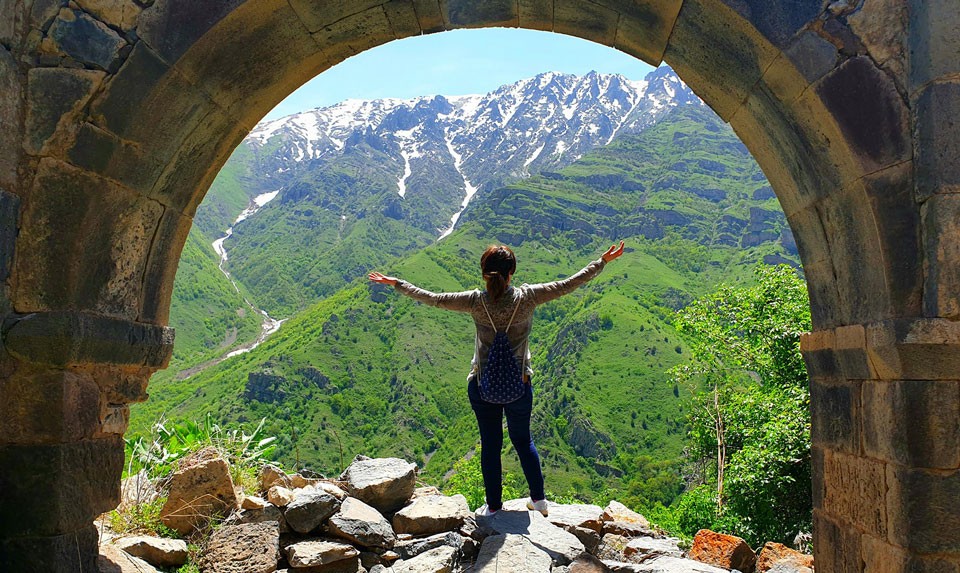The Hermon Monastery - One Of The Oldest Monuments In The Vayots Dzor
According to the testimony of Stepanos Orbelian, this monastery was founded in 936 by the Prince of Syunik, Smbat and Bishop Hakob, who, after the completion of the construction of the temple, settled the monastic brethren here. In the same year, the wife of Prince Smbat, Princess Sophia, donated a number of villages and gardens to the monastery.
Hermon is one of the oldest monuments in the Vayots Dzor Province of Armenia, which is located above the village of Yeghegis, on the left side of the Alayaz-Arates road, at the foot of the rocky mountains, on a plateau called Karevan. Unfortunately, the Hermon Monastery has not come down to us in its original form. However, even in ruins, it is a beautiful and impressive sight.
This monastery was inhabited by hermits who previously lived in the caves of Karevana, and called it the monastery of Achermon after the oldest member of the brethren, but later it became a habit to call it the monastery of Hermon.
The first church built in the monastery in the 10th century was named after Grigor Lusavorich (Gregory the Illuminator, the founder of Christianity in Armenia). The period of cultural heyday of the monastery of Hermon, however, fell on the 14th-15th centuries. In 1338, after the activity of the famous Gladzor University stopped, the student and assistant of Yesai Nachetsi, Tiratur Vardapet Kiliketsi, settled here, laying the foundation for a new school, which actually became the continuation of the tradition of Gladzor University in Vayots Dzor.
After the death of Tiratur Vardapet in 1372, the school continued its activities until the end of the 15th century. Scientists, gifted artists and skilled scribes studied and worked at the Hermon School. Here the talented writer Grigor Akhaltskhatsi received his education and studied the art of writing, who then copied in 1419 the “Book of Questions” by Grigor Tatevatsi. About three dozen manuscripts of the Hermon School have come down to us.
In order to study the experience of Hermon specialists, representatives of many educational centers of the country, including those from the Tatev Monastery, came here. Let us recall Simeon Tatevatsi, who in 1414 was copying “The Interpretation of the 12 Prophets” in the Hermon Monastery.
The Hermon School gained its greatest fame in the 40s of the 15th century, when a student of Grigor Tatevatsi, Vardapet Hovhannes, was elected leader of the brethren. The Hermon monks, led by this energetic learned monk, played a significant role in the transfer of the patriarchal throne of Armenia from Cilicia (from the city of Sis) to Echmiadzin.
Vardapet Hovhannes, with his disciple Stepanos and other clergy of Syunik, participated in the Etchmiadzin Councilin 1441, where in his speech he demanded the restoration of the patriarchal throne in his native land and the immediate transfer of the right hand relic of Gregory the Illuminator to Eastern Armenia.
The Hermon School ceased to exist at the end of the 16th century as a result of unfavorable political conditions, leaving a well-deserved fame in the history and culture of the Armenian people.
To include a visit to the Hermon Monastery in your South Armenia itinerary, please contact Phoenix Tour at info@phoenixtour.am
